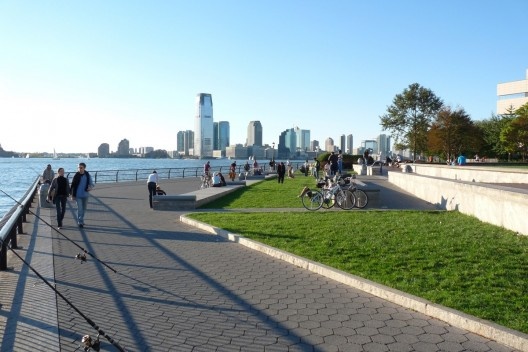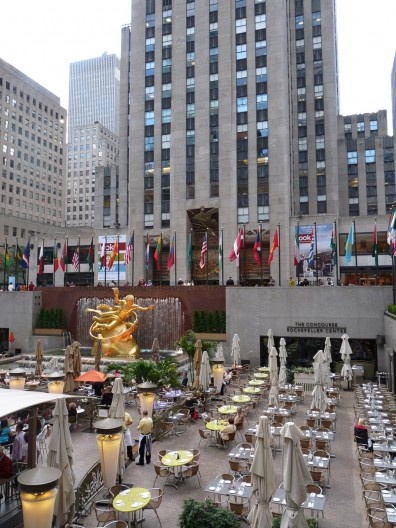
Lower Manhattan e o encontro com as águas do Rio Hudson
Foto Nicolás Sica Palermo
NS: Manhattan has been, since the beginning of the 20th century, one of the world's financial capital, and the fact that it is an island was, and is still, an important condition for urban growth. The architecture of the southern part of the island reflects clearly these two aspects. In what parts of south of Manhattan do you think there are areas that could be considered heritage and should be preserved? What areas (I mean the avenues, streets or neighborhoods) do you think are urbanistically interesting?
KF: I have always said that Manhattan is the only walled city in the US by virtue of the water that encloses and defines it on all sides. The southern part of the island should surely be preserved in as much as it is the most European. I am not only alluding to the labyrinthine street grid of the Wall Street area but also to the nineteenth century mercantile atmosphere that permeates almost every building from Cass Gilbert’s Woolworth Building to the Customs House and the Stock Exchange. There is also the very intimate connection with the water plus the “time machine” experience of the Staten Island ferry. Whenever I am there I feel I am back in Liverpool. Yamasaki’s World Trade Center totally disrupted this fabric and its violent disappearance has disrupted it even further.

Rockefeller Center, 1928-1938 (projeto final), 1938-1940
Foto Nicolás Sica Palermo
NS: What expansion opportunities remain in Manhattan? Should we talk about reformulation instead of expansion? What new interventions seem relevant and could be taken as a reference for the future in another parts of the city?
NS: Is there any particular area that could be rearranged? What new interventions seem relevant and could be taken as a reference for the future of that part of the city? What expansion opportunities remain in Manhattan?
KF: All told Manhattan is a tragic late-capitalist story in as much as it has long since been a developer’s ‘free-for-all’. Notwithstanding the illustrious City Planning Commission, there is no coherent idea of city development on the table. It is significant that there has never been a city architect in New York. Once in a while a great building appears; Mies’s Seagram Building, Wright’s Guggenheim and most recently, Piano’s New York Times but aside from Rockefeller Center—still a miraculous achievement—the 20th century contributed nothing of urbanistic consequence to the Manhattan and there is no indication that the 21st century will do any better. It is by and large a melange of mediocre modern architecture held together by a compelling grid. Of course one should re-cycle its fabric of quality whenever possible along lines of Peter Buchanan’s principle 'long life-loose fit' (10).
note
10
"The built environment accounts for about half to two-thirds of our current energy use; this alarming statistic is exacerbated by our present attitudes towards impermanence, commodification, and the rapid amortization of building stock. Buchanan goes on to show that historic buildings arc inherently more adaptable to re-use than modern structures, first because they were built to more generous standards and second because they were constructed of more durable natural material. Moreover, from the point of view of Junction they tended to be 'long life, loose fit' structures; that is to say, they may be much more readily adapted to re-use than more modem, ergonomically optimized building forms.
In relation to the potential for the adaptive re-use of pre-existing structures we should surely restrict our current habit of exploiting ex-agricultural 'greenfield' sites in favor of re-using ex-industrial brownfield sites. Rather than continuing to proliferate urban sprawl, we should either reuse obsolete buildings or demolish them and re-use their sites once they have been cleared. Only provisions of this order will save us from the continual consumption of fertile land and along with this, the ultimate depletion of the planet's non-renewable resources". FRAMPTON, Kenneth. "On the Predicament of Architecture at the Turn of the Century", in: Hunch 6/7: 109 Provisional Attempts to Address Six Simple And Hard Questions. Rotterdam, The Netherlands: The Berlage Institute, episode publishers, and the authors. ISBN 90 805362-6-1, 2003. 516 pp.



